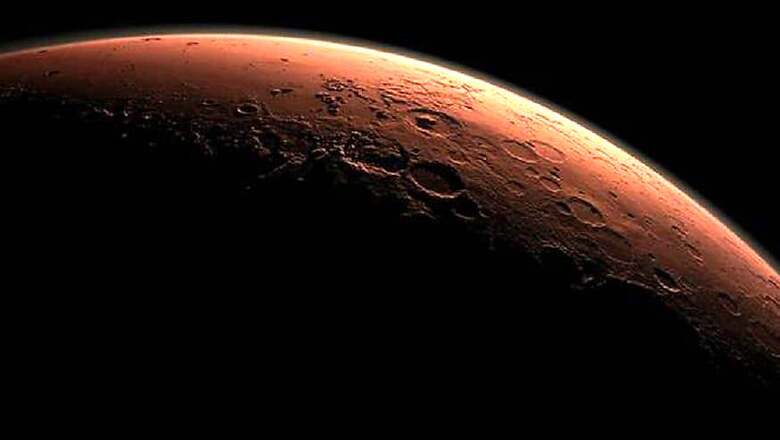
views
Solar wind and radiation were responsible for stripping the Martian atmosphere, transforming Mars from a planet that could have supported life billions of years ago into a frigid desert world, new results from NASA have revealed.
"We've determined that most of the gas ever present in the Mars atmosphere has been lost to space," said Bruce Jakosky, principal investigator for the Mars Atmosphere and Volatile Evolution Mission (MAVEN), University of Colorado in Boulder.
The findings showcased that about 65 percent of the argon (a noble gas which is the third-most abundant gas in the Earth's atmosphere) that was ever in the atmosphere has been lost to space.
CO2 is of interest because it is the major constituent of Mars' atmosphere and because it's an efficient greenhouse gas that can retain heat and warm the planet.
Also read: China to Launch 156 Mini-Satellites To Facilitate Global Broadband Coverage
Liquid water, essential for life, is not stable on Mars' surface today because the atmosphere is too cold and thin to support it.
However, evidence such as features resembling dry riverbeds and minerals that only form in the presence of liquid water indicates the ancient Martian climate was much different - warm enough for water to flow on the surface for extended periods.
"This discovery is a significant step toward unravelling the mystery of Mars' past environments," added Elsayed Talaat, MAVEN programme scientist in a paper to be published in the journal Science.
There are many ways a planet can lose some of its atmosphere.
For example, chemical reactions can lock gas away in surface rocks, or an atmosphere can be eroded by radiation and a stellar wind from a planet's parent star.
The new result reveals that solar wind and radiation were responsible for most of the atmospheric loss on Mars, and the depletion was enough to transform the Martian climate.
The team made its estimate using data from the Martian upper atmosphere, which was collected by MAVEN's Neutral Gas and Ion Mass Spectrometer (NGIMS).Also read: SpaceX CEO Elon Musk Says Extra Falcon 9 Rocket Parts Recovered From Historic Launch




















Comments
0 comment